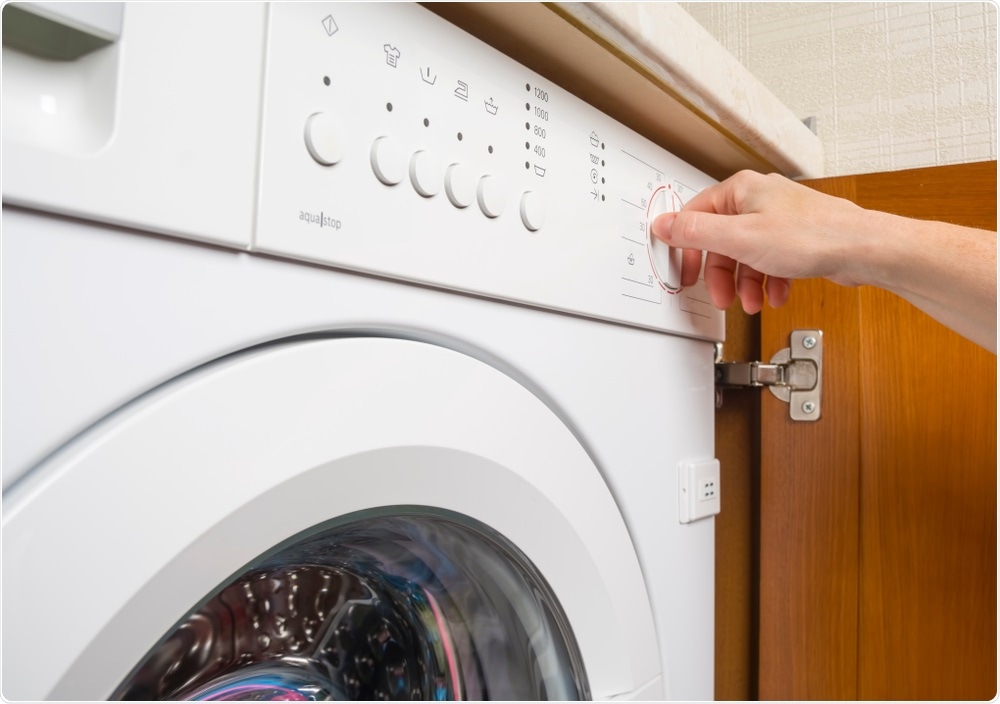A new study has revealed that high-efficiency home washing machines may be facilitating the spread of harmful bacteria, due to their reliance on low energy and low-temperature wash settings that do not thoroughly remove bacteria.
 Denis Klimov 3000 | Shutterstock
Denis Klimov 3000 | Shutterstock
Consumer-grade washing machines responsible for superbug exposure
Recently, a study concluded that consumer-grade washing machines were to blame for an outbreak of drug-resistant bacteria at a hospital in Germany. As energy-efficient washing machines do not use hot washes, bacteria are not destroyed, and harmful bacteria can thrive, infecting clothes and linen added into subsequent washes.
Experts are warning that consumers should be aware of the potential spread of bacteria in their own homes and advise that while bacteria found in domestic washing machines usually aren’t a serious threat to health, machines should still be cleaned regularly to protect families against potential illness.
Cold washes don’t kill bacteria
This year, a German hospital suffered an outbreak of the drug-resistant Klebsiella oxytoca. The hospital battled to keep newborns safe as newborn babies continued to be exposed to the bacteria. The results of an investigation highlighted that the hospital’s washing machines were the root of the outbreak, and in removing them, exposure ceased.
It is not normal protocol for hospitals to use household-type washing machines, and what happened, in this case, has emphasized the dangers of relying on energy-efficient laundry cycles when harmful bacteria come into play.
Newborns came into contact with the harmful bacteria through their clothing being washed in washing machines that were home to the superbug. The usual procedure in hospitals is to use high-temperature industrial machines, killing off bacteria during the cycle. However, by using regular consumer machines, the washes were not sufficient at destroying the harmful bacteria.
Do washing machines pose a danger to us?
Experts are divided on their opinion as to whether we should be concerned about then washing machines we use in our homes.
The fact is that the bacteria we usually find in our home environment is no the same that hospitals have to battle with. it is unlikely that dangerous bacteria would be introduced into our washing machines in the first place.
However, Ricarda M. Schmithausen, Ph.D., senior physician at Institute for Hygiene and Public Health at the WHO Collaboration Center at the University of Bonn, highlights that the low-temperature washes that have become commonplace in the home in order to save energy and reduce our carbon footprint are allowing more bacteria survive the washing process.
Researchers have found that the rubber seals provide a popular breeding ground for bacteria in machines that use cool water washes. Over time, the buildup of bacteria may pose a threat to the health of the family using the machine, as the laundry becomes a method of transferring bacteria to members of the household.
Avoiding the spread of bacteria in our homes
What can be done to avoid becoming ill from exposure to the bacteria harbored in our machines? The take-home message here is to consider what is being put into the machine. Most normal washes are not exposed to harmful bacteria in the first place, most bacteria we come into contact with is benign and sometimes beneficial.
However, in households where a family member is sick, or there is a newborn, or when washing clothes that have been exposed to a particular level of dirt, using hotter washes to eradicate bacteria should be considered.
Sick people and babies are particularly vulnerable to bacteria, and in addition, the linen and clothes of those who are sick will usually carry more harmful bacteria than standard laundry. Therefore, these instances must receive special attention in order to prevent the spread of bacteria to other family members.
Experts recommend using a hot wash when required, and washing your machine on a monthly basis, wiping it down with a 10 percent bleach solution to avoid the spread of harmful bacteria.
Journal reference:
Schmithausen, R. M., et al. (2019). The washing machine as a reservoir for transmission of extended spectrum beta-lactamase (CTX-M-15)-producing Klebsiella oxytoca ST201 in newborns. Applied and Environmental Microbiology. DOI: 10.1128/AEM.01435-19.